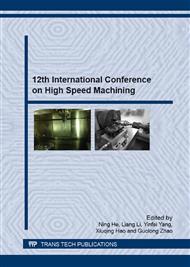p.444
p.452
p.462
p.468
p.476
p.484
p.493
p.501
p.509
Rapid Modeling of BTA Deep-Hole Drill Based on Customized Development of NX
Abstract:
Low Pressure Heater is one of important equipment in nuclear power industry; within the manufacturing of plate of heater, the deep-hole drill technology is a key point, and BTA (Boring and Trepanning Association) is applied. It is difficult to keep the high-quality hole of BTA due to the poor cutting condition, chip breaking, heat dissipation, and low rigid of the machining system. Therefore, this proposes a high precision to drilling tools, especially the design of the blade is of great importance. Based on the analysis of drill structure, this dissertation uses the method of parametric design which is suitable for NX. Combining the Visual Studio and Microsoft Access platform develops the fast digital modeling software design. The parameterization design can not only realize the rapid modeling of BTA deep-hole drill, but also shorten the design cycle and improve the efficiency of the drill which benefited from the convenient design of the blade, which has a significantly practical application value.
Info:
Periodical:
Pages:
476-483
Citation:
Online since:
January 2016
Authors:
Keywords:
Price:
Сopyright:
© 2016 Trans Tech Publications Ltd. All Rights Reserved
Share:
Citation:


